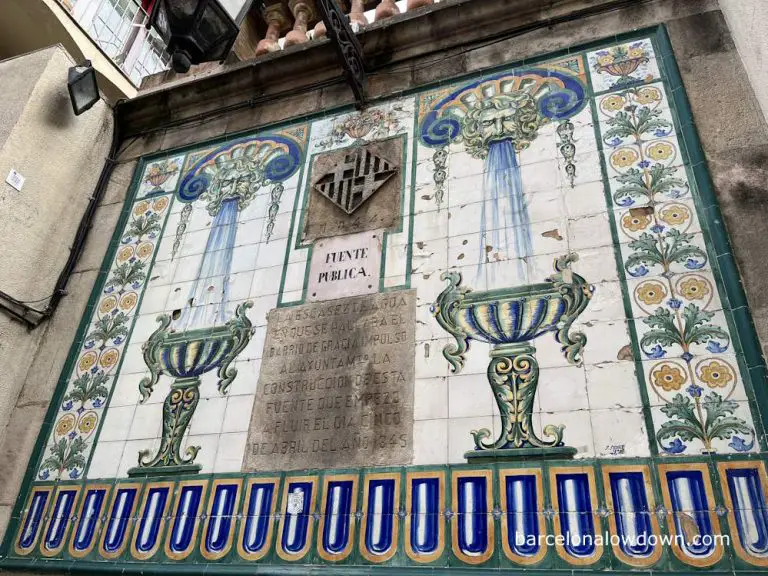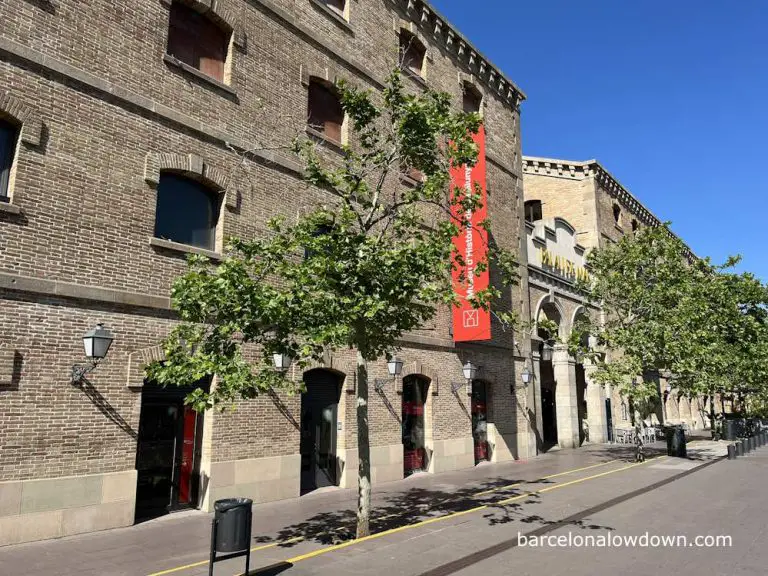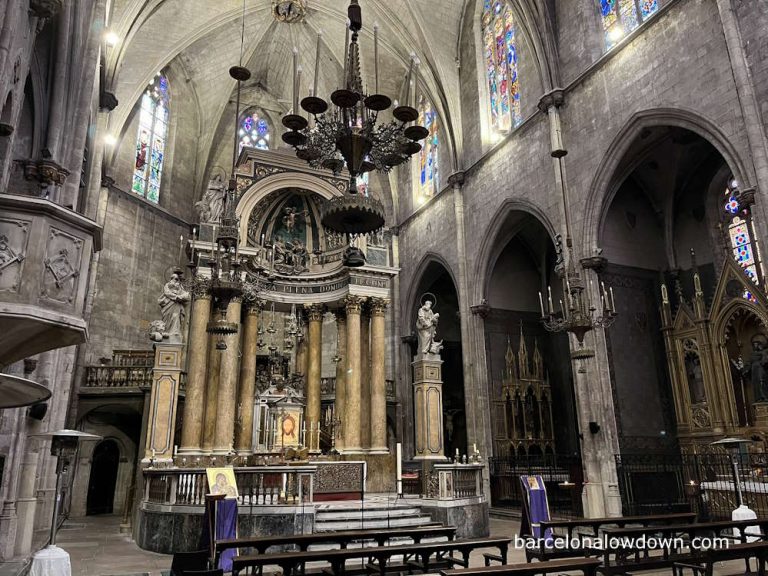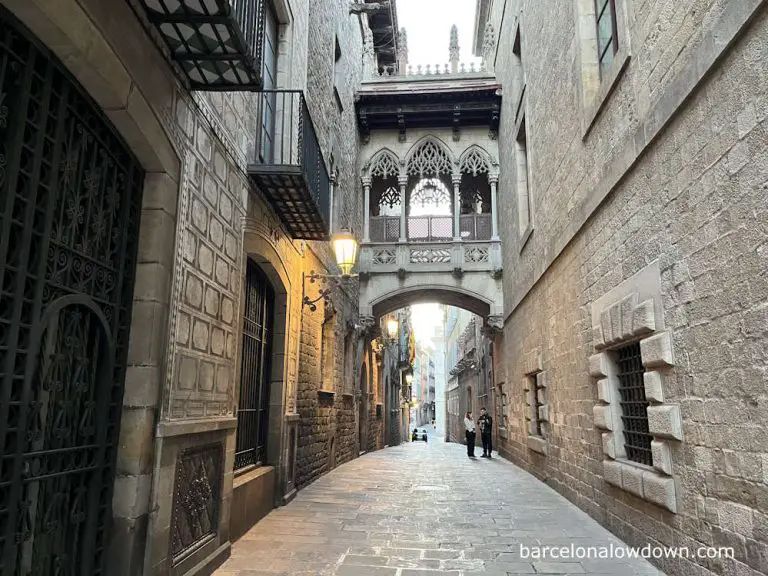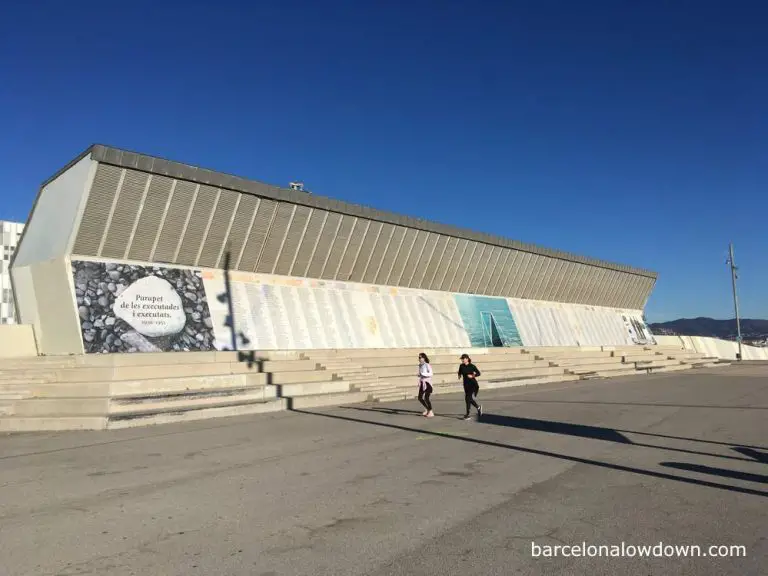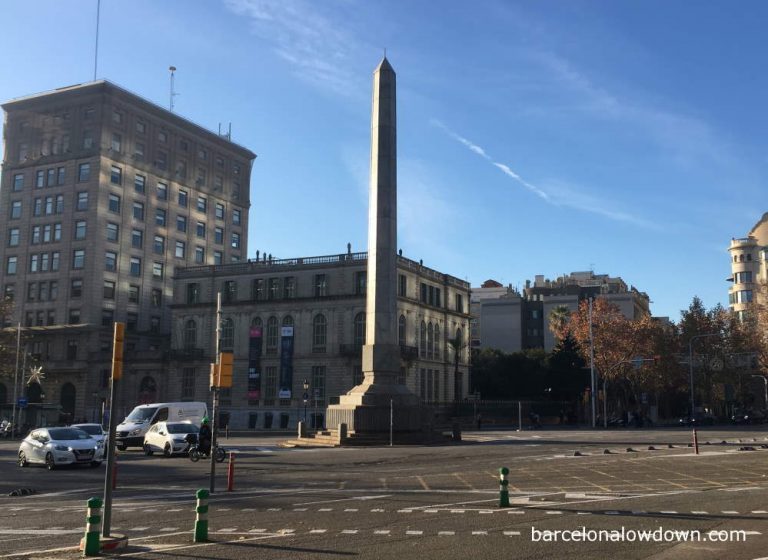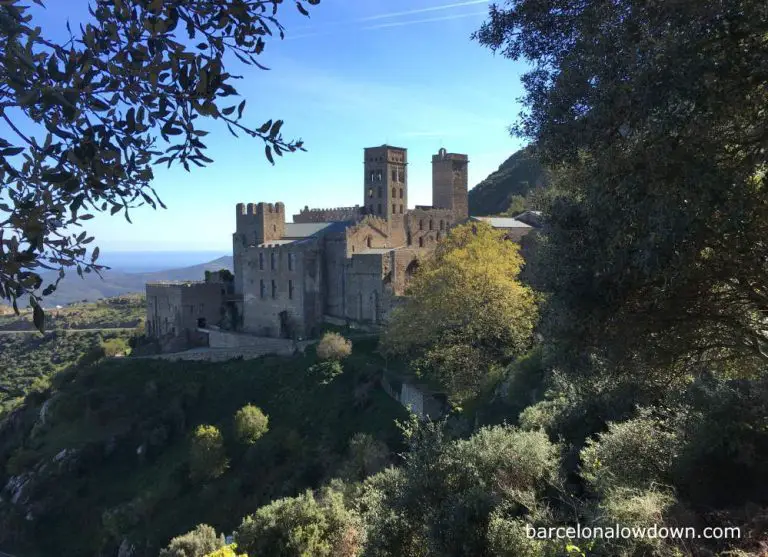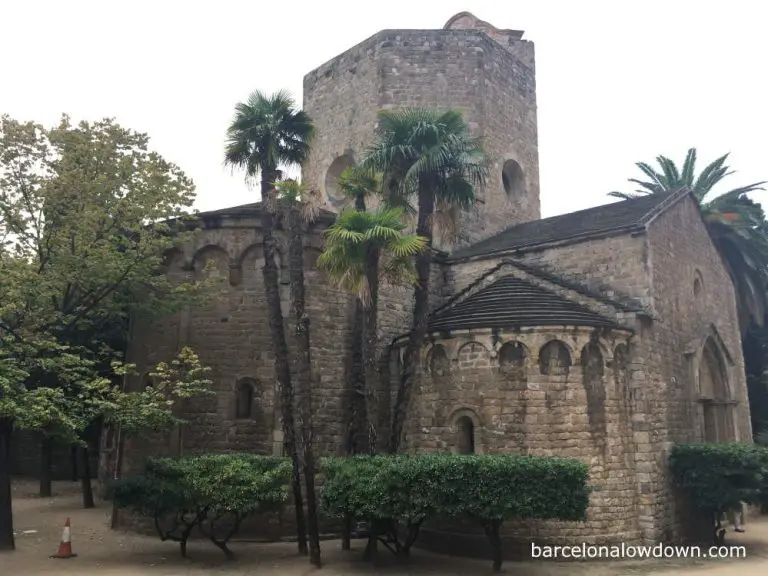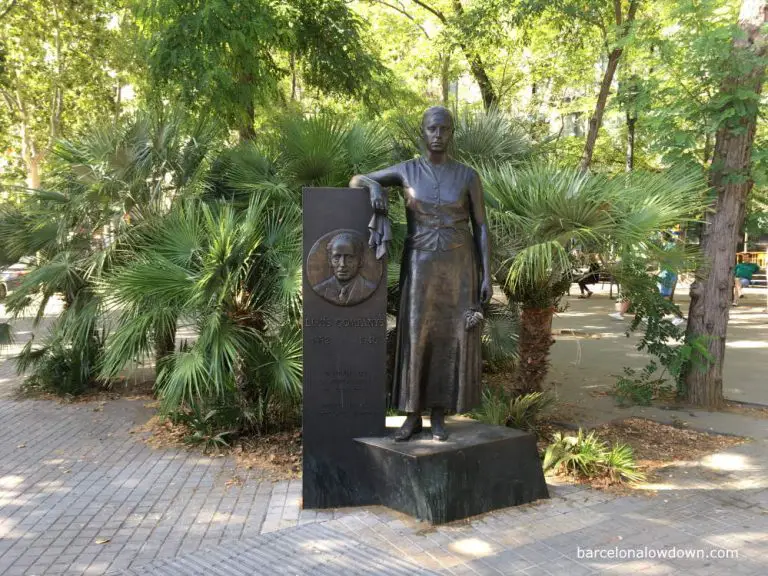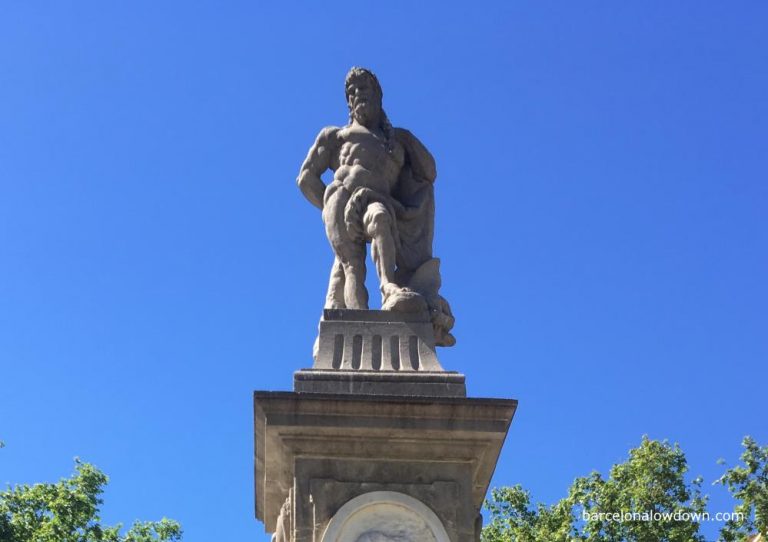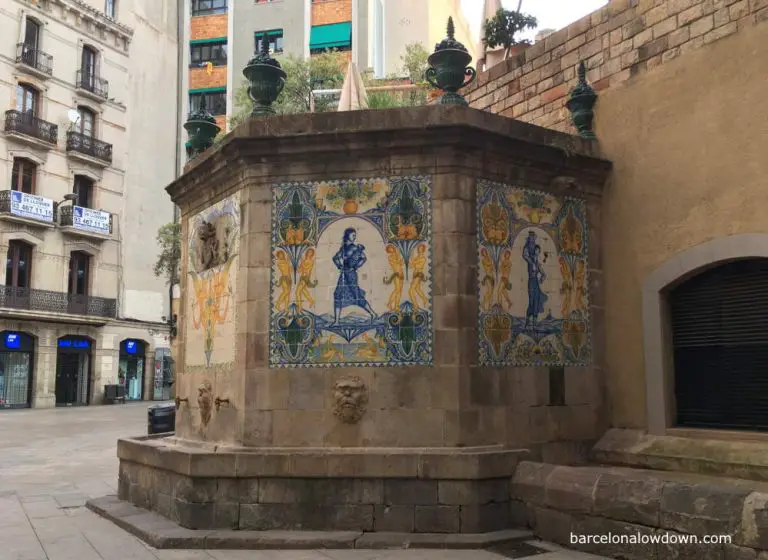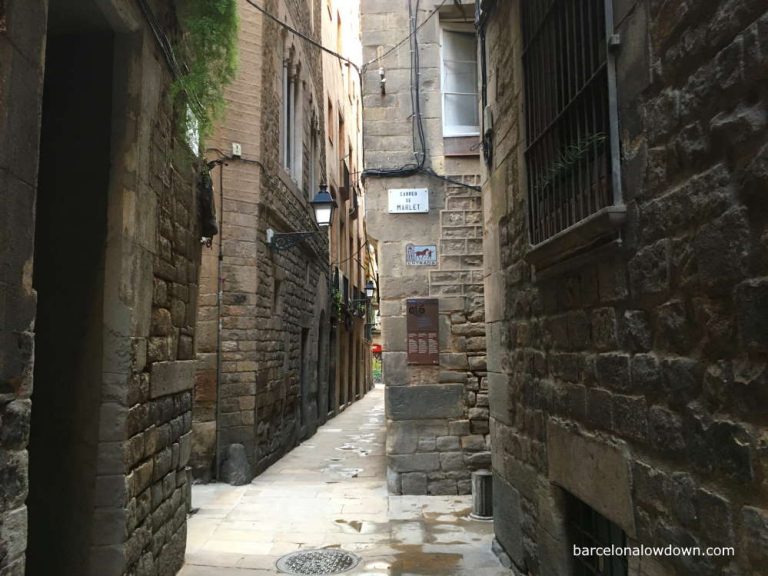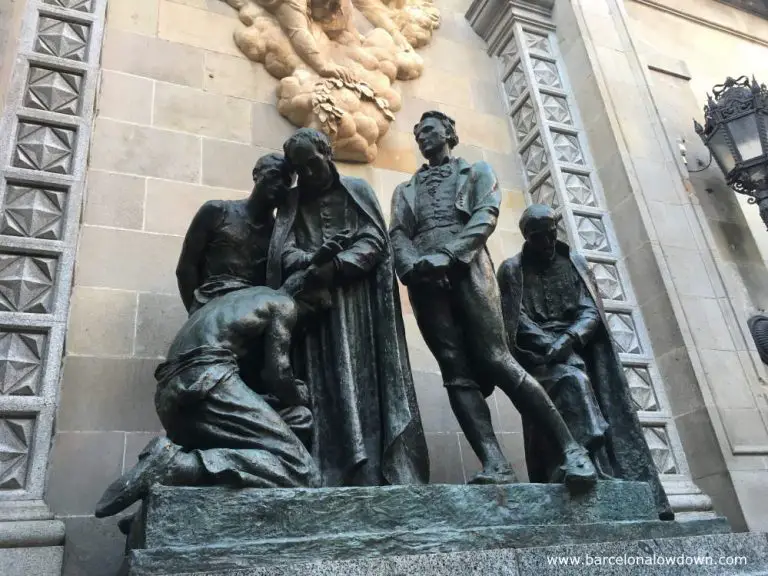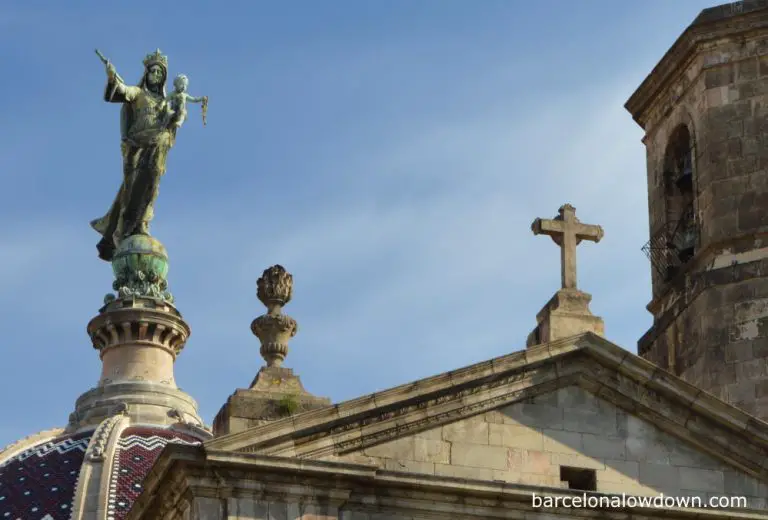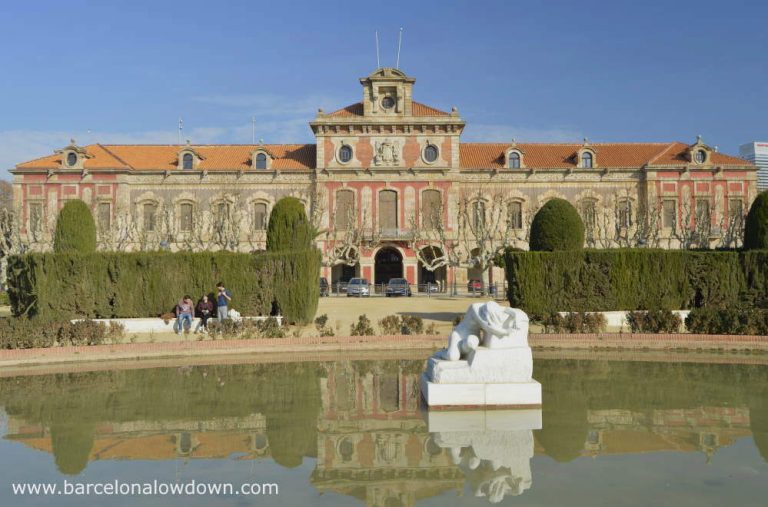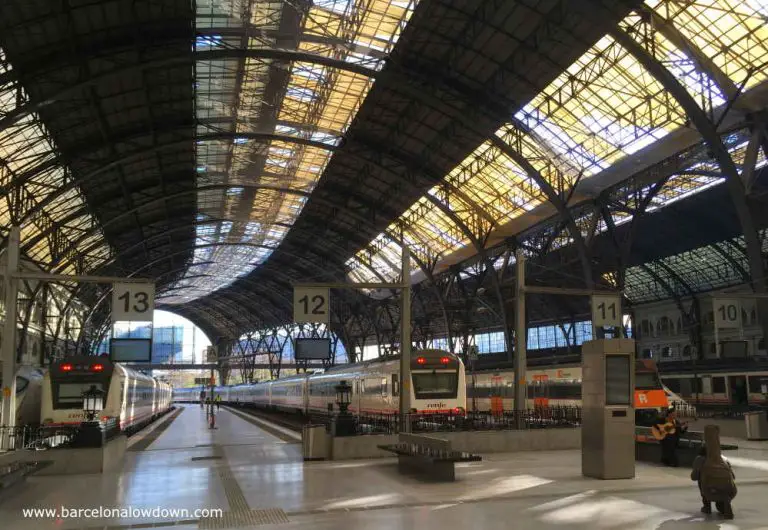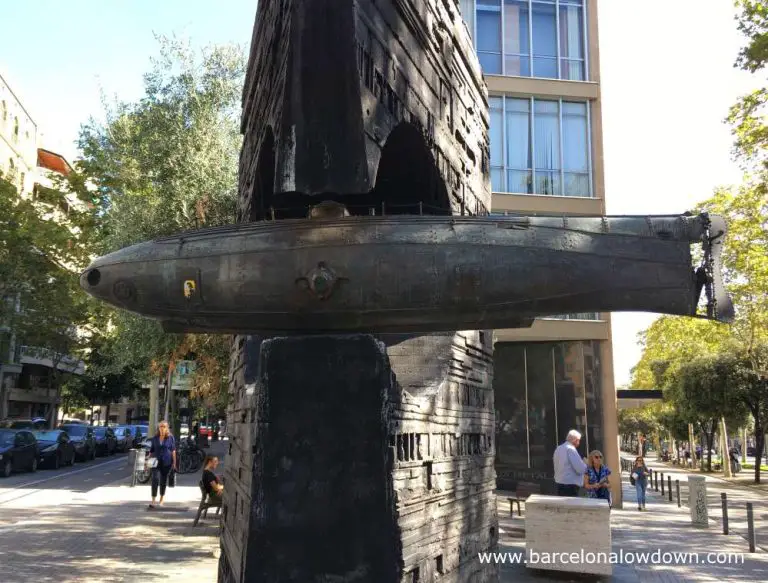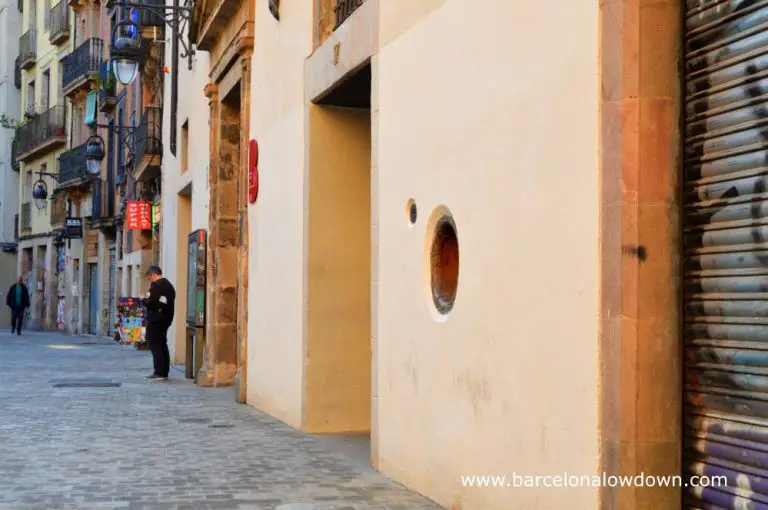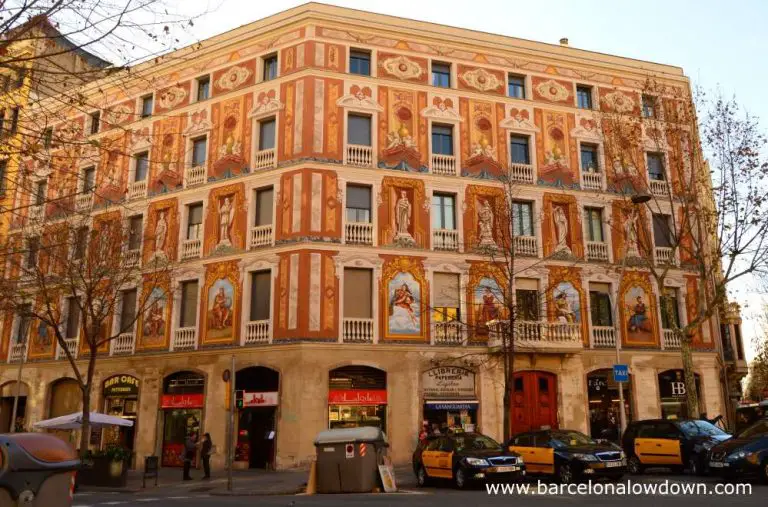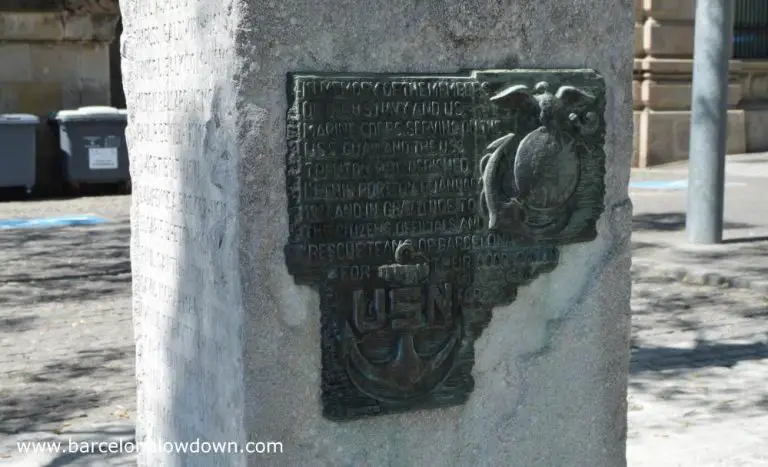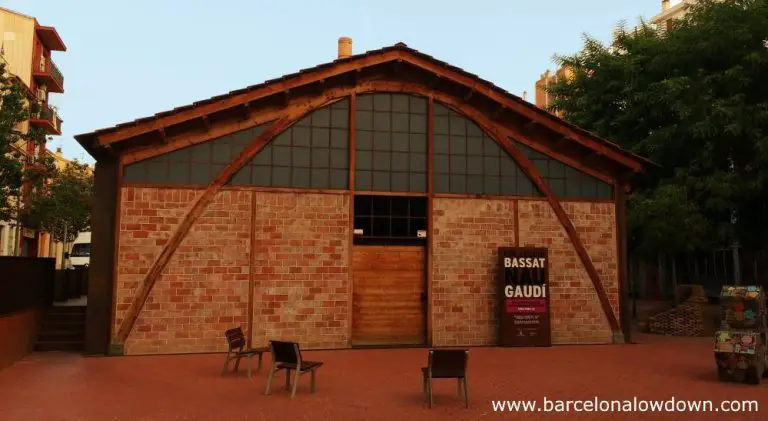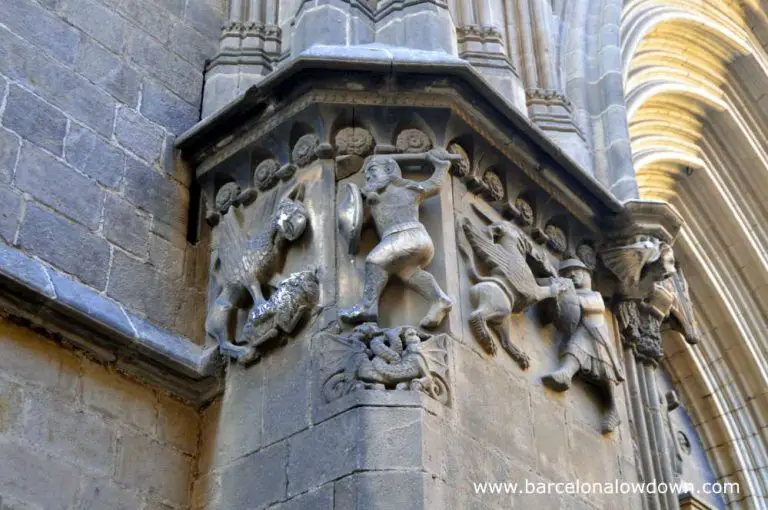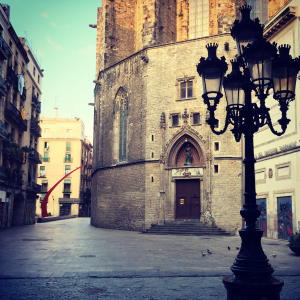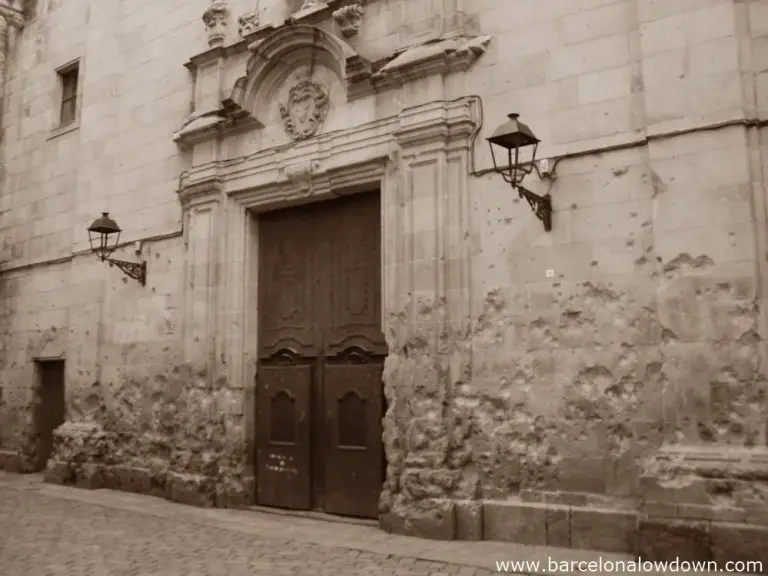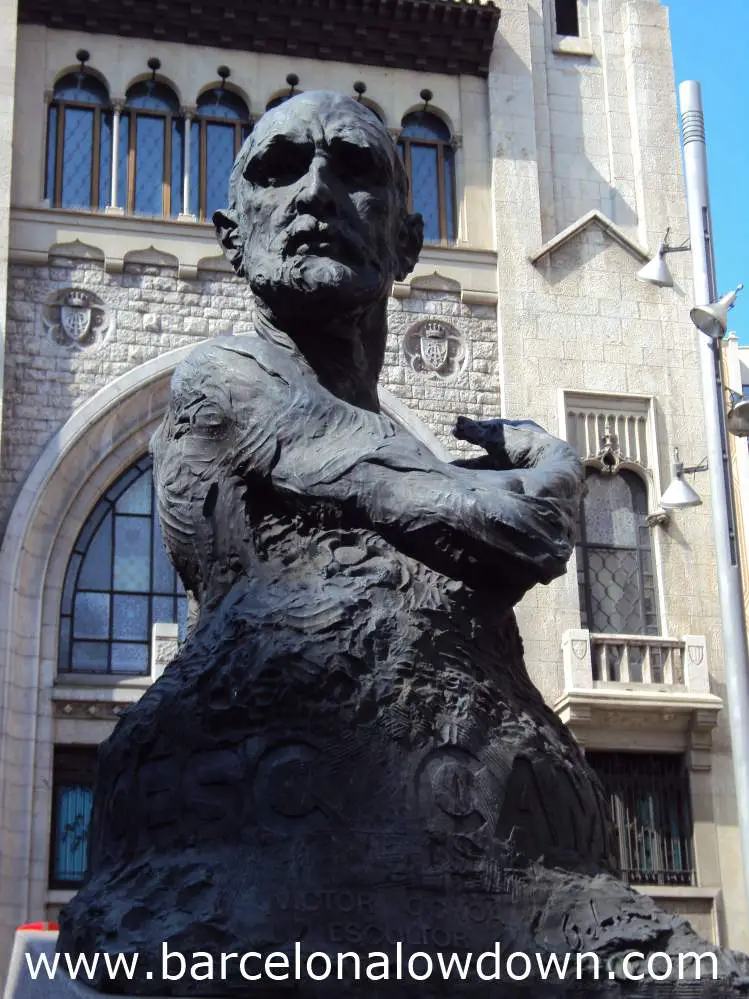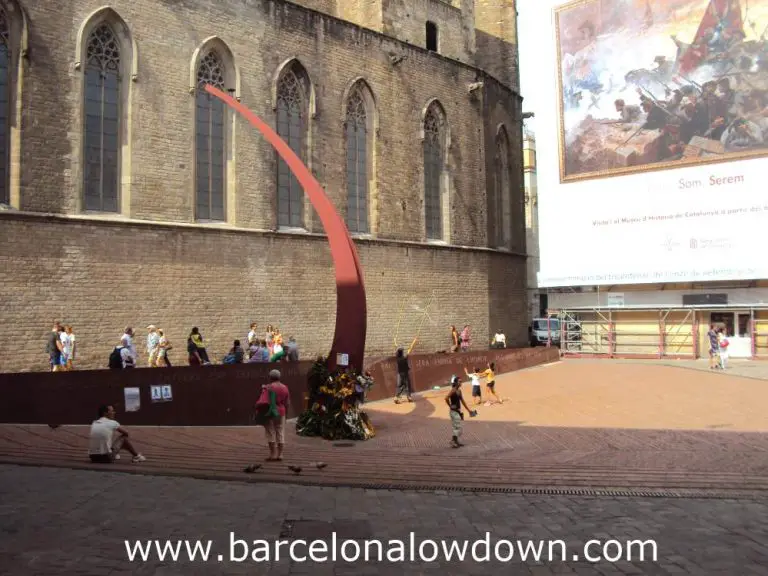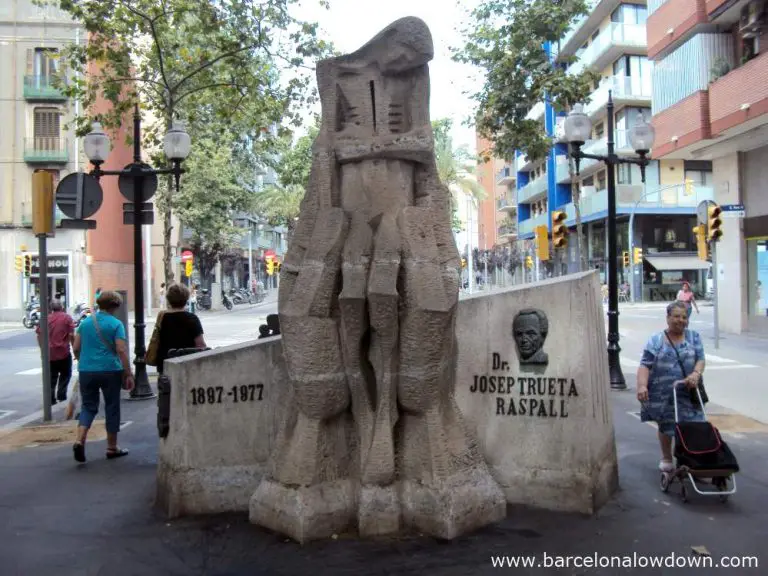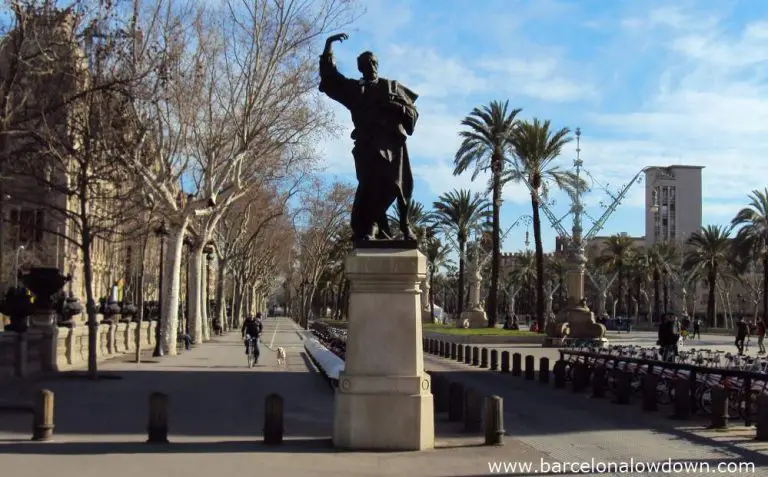Nowadays, we often take running water for granted whenever we shower or turn on a tap. However, until about a hundred years ago, if you wanted water in your home, you had to fetch it from a public fountain. The first piped, or at least channelled, water system in Barcelona was installed by the Romans,…
Category: History
History Museum of Catalonia (Museu d’Història de Catalunya)
As its name implies, The History Museum of Catalonia is entirely dedicated to explaining the history of Catalonia. The museum is located in the Port Vell harbour and is housed in the only remaining building from the original nineteenth-century dockyards, built during the height of the Industrial Revolution. The museum is divided into two floors.…
Basilica of Sants Màrtirs Sant Just i Pastor
The Basilica of Sants Màrtirs Sant Just i Pastor dates back to the fourteenth century and was built on the ruins of a fourth-century church, which was itself built on top of a pagan temple dedicated to the deity Mithras from Greco-Roman mythology. The church’s plain exterior, typical of Catalan Gothic architecture, belies the beauty…
Exploring Barcelona’s Gothic Quarter: A Perfect Half-day Itinerary
With over two thousand years of history, Barcelona’s Gothic Quarter is a labyrinth of narrow streets and striking Gothic architecture that dates back to the Middle Ages and the times of the Roman Empire. Located between Plaça de Catalunya and the Port Vell Harbour, the Gothic Quarter is the heart of the Old City and…
Monument to the People Executed Between 1939 and 1952
The parapet of the people executed 1939-1952 (Catalan: Parapet de les executades i executats 1939-1952) is a fifty-five metre-long memorial to the 1,706 people executed in Barcelona during the early years of Franco’s dictatorship. The executions were by firing squad, and victims were lined up against a concrete wall which stood next to an area…
The Twenty-Metre Tall Granite Obelisk in Plaça Cinc d’Ors
If you keep walking along Passseig de Gràcia, past La Pedrera, towards the Vila de Gràcia, you’ll come to a large and rather chaotic intersection called Plaça Cinc d’Ors. The plaza, which is really just an overgrown roundabout, takes its name from one of the cards in a pack of Spanish playing cards; the Cinc…
The Monastery of Sant Pere de Rodes (and how to get there)
The Monastery of Sant Pere de Rodes is a Romanesque-style Benedictine monastery which overlooks the Costa Brava, one hundred and fifty kilometres north of Barcelona. Legend has it that the monastery was built by monks who fled from Rome during the seventh century, taking with them the remains of Saint Peter. In reality, the first…
Sant Pau del Camp: The Oldest Church in Barcelona
The church of Sant Pau del Camp (English: Saint Paul of the fields) is the oldest Christian church in Barcelona and was built between 897 AD and 910 AD. It is also one of the best examples of Romanesque architecture to be found in the city. Located in the multicultural Raval neighbourhood and off the…
The Controversial Monument to Slave Trader Antonío López y López
Many of Barcelona’s squares and plazas feature large and impressive statues. Some of the statues are decorative works of art, while others are monuments which honour famous people. Some of the monuments honour kings or heroes of yesteryear. Others feature famous artists, writers, politicians and wealthy businessmen. One such monument was the statue of Antonio…
Monument to Lluís Companys (Statue of a girl with a handkerchief)
Born in Tarrós in 1882, Lluis Companys was one of the founding members of the Catalan political party Esquerra Republicana de Catalunya and served as president of the Generalitat de Catalunya from 1934 until he was executed in 1940. The first part of the twentieth century was a time of political unrest and upheaval in…
Hercules Fountains & The Origins Of Barcelona
According to legend, Barcelona was founded by the Greek God Heracles, who, together with his brother Hermes, accompanied Jason and the Argonauts, searching for the Golden Fleece. The brothers set sail with a fleet of nine ships, one of which was lost in a storm somewhere in the Mediterranean. After days of searching for the…
The Medieval Fountains of Barcelona’s Gothic Quarter
Barcelona was founded by the Romans in the first century AD. As the city’s population increased, two aqueducts were built to bring water from springs in the mountains nearby. After the fall of the Roman Empire, the aqueducts fell into disrepair and were eventually abandoned. During the tenth century AD, a channel called El Rec…
Barcelona’s Medieval Jewish Quarter (El Call)
Barcelona’s medieval Jewish Quarter is a small area of narrow streets and alleyways tucked away behind the Cathedral, in the oldest part of the city centre. The area was abandoned after the pogroms of 1391, almost a hundred years before the Spanish Inquisition and the expulsion of the Jews from Spain. Today, you can learn…
Monument to the Heroes of 1809
Commonly referred to as the Monument to the Martyrs of Independence, The Monument to the Heroes of 1809 is dedicated to eight people who were executed after a failed attempt to drive occupying French troops out of Barcelona. The Martyrs of Independence During the Peninsula War (1807 – 1814) Barcelona was occupied by Napoleon’s army…
Basilica of La Mercè
It may not be as well known as Barcelona’s other historic churches, but the Basilica of Our Lady of Mercy (Catalan: La Basílica de la Mare de Déu de la Mercè) is a worthy addition to your list of things to see in the Gothic Quarter. The basilica’s stunning interior consists of a nave flanked…
Barcelona’s Oldest Fountain: La Font de Santa Ana
From the narrow streets and alleyways of the Gothic Quarter to the wide boulevards of l’Eixample district, wherever you go in Barcelona, you’ll see fountains of all shapes and sizes. The earliest fountains were built during the Middle Ages to provide water for Barcelona’s inhabitants and livestock. Simple and functional, early fountains were sparsely decorated…
The Remnants of Barcelona’s 18th Century Citadel
Centrally located, at the north edge of the old town, the Parc de la Ciutadella is Barcelona’s best known and most popular park. The seventeen-hectare park is home to Barcelona Zoo, the Catalan Parliament Building, two museums, a large fountain, a bandstand, a boating lake and a diverse collection of sculptures and monuments. A green…
Estació de França Railway Station
Barcelona França railway station (Catalan: Estaçió de França) was built in 1926 in preparation for the Barcelona International Exhibition which took place in 1929. The Noucentista style station was designed by Pedro Muguruza and Andreu Muntaner as the main terminus for trains arriving from France. Nowadays, the station has largely been superseded by Barcelona Sants…
Monument to Narcís Monturiol : Inventor of the Steam Powered Submarine
Located on Avinguda Diagonal, this four and a half metre concrete and bronze monument to inventor and political activist Narcís Monturiol i Estarriol was inaugurated in 1963. Created by Josep Maria Subirachs, the monument includes a replica of Monturiol’s most famous invention, the steam-powered submarine Ictíneo II, first launched in the Port of Barcelona in…
The Foundling Wheel at Plaça de Viçenc Martorell
Many of Barcelona’s civic centres and local council offices are located in historic buildings, many of which originally belonged to private individuals or the church. One such building is the Citizen Services Office (Seu del Districte de Ciutat Vella) located at Plaça de Viçenc Martorell in Barcelona’s El Raval neighbourhood. The building dates back to the…
The Cerdà Houses and the Origins of the Eixample District
In the 1850’s Barcelona was booming and the medieval walls which surrounded the Gothic Quarter were torn down to allow the city to grow. The city council asked several architects and city planners to submit plans for a new suburb which would envelope surrounding villages such as Gràcia, Sarría and el Clot. The councillors initially…
Monument to US Servicemen
On the night of January 17th 1977, 49 American servicemen lost their lives in a tragic accident in Barcelona harbour. The men, who were serving aboard the USS Guam and USS Trenton, had been enjoying a few hours of shore leave in Barcelona and were returning to their ships when the small boat they were…
The First Building Designed by Antoni Gaudí
No matter how brief your stay in Barcelona, the chances are you will visit at least one building designed by Antoni Gaudí. A mixture of modernisme, surrealism and Gothicism combined with innovative engineering, Gaudi’s unique architectural style has shaped many of the city’s most famous landmarks and influenced generations of architects. Although most of Gaudi’s…
Wilfred the Hairy: History and Legends
Tucked away beside the north entrance to Barcelona Cathedral, there is a small stone sculpture of an extremely hairy knight fighting what looks like a griffin. The knight is Wilfred the Hairy (Guifré el Pilòs), who was Count of Barcelona from 878 until his death in 897. Wilfred the Hairy was born in 840 in Prades…
Santa Maria del Mar – Barcelona’s Cathedral of the Sea
The Basilica de Santa Maria del Mar was built during the 14th century on a site which was once occupied by a Roman Amphitheatre. The church took 55 years to build and is a rare example of pure Catalan Gothic architecture (most churches and cathedrals are a combination of styles). The simplicity of design and…
The Dark History of Plaça de Sant Felip Neri
When I took this photo, I was planning on writing an article explaining how the bullet-scarred walls of the Església de Sant Felip Neri church are a monument to the people executed here by Franco’s troops during the Spanish Civil War. I’m not entirely sure where I got that version of events from, but it…
Monument to Francesc Cambó
Born in Verges in 1876, Francesc Cambó was a wealthy conservative politician, lawyer, author, philanthropist and Catalan nationalist. He founded the Regionalist League, was member of the Spanish government, promoted Catalan culture and collected art (a large part of his collection is on display in Barcelona’s MNAC museum). Shortly after the Second Spanish Republic was proclaimed in…
El Fossar de les Moreres
In the heart of the Ribera district, the Fossar de Les Moreres is a sombre reminder of Barcelona’s turbulent history. The site has been a burial ground since medieval times and in 1714 citizens who died defending the city during the siege of Barcelona were buried here in a mass grave. Because of this the…
Monument to Doctor Trueta
Josep Trueta Raspall was born in the Poblenou neighbourhood of Barcelona in 1897. He studied medicine at the University of Barcelona and in 1921 started working as an assistant surgeon in the Hospital de la Santa Creus I Sant Pau. By the onset of the Spanish Civil War in 1936 Dr. Trueta had already started…
Statue of Pau Claris
This bronze statue of Pau Claris was inaugurated in 1880 and originally stood on what is now Via Laietana. It was withdrawn from public display during the Spanish Civil War, as were other monuments to famous Catalan figures such as Dr Bartomeu Robert and Rafael Casanova. In 1977 the statues were restored and reinstated in…

